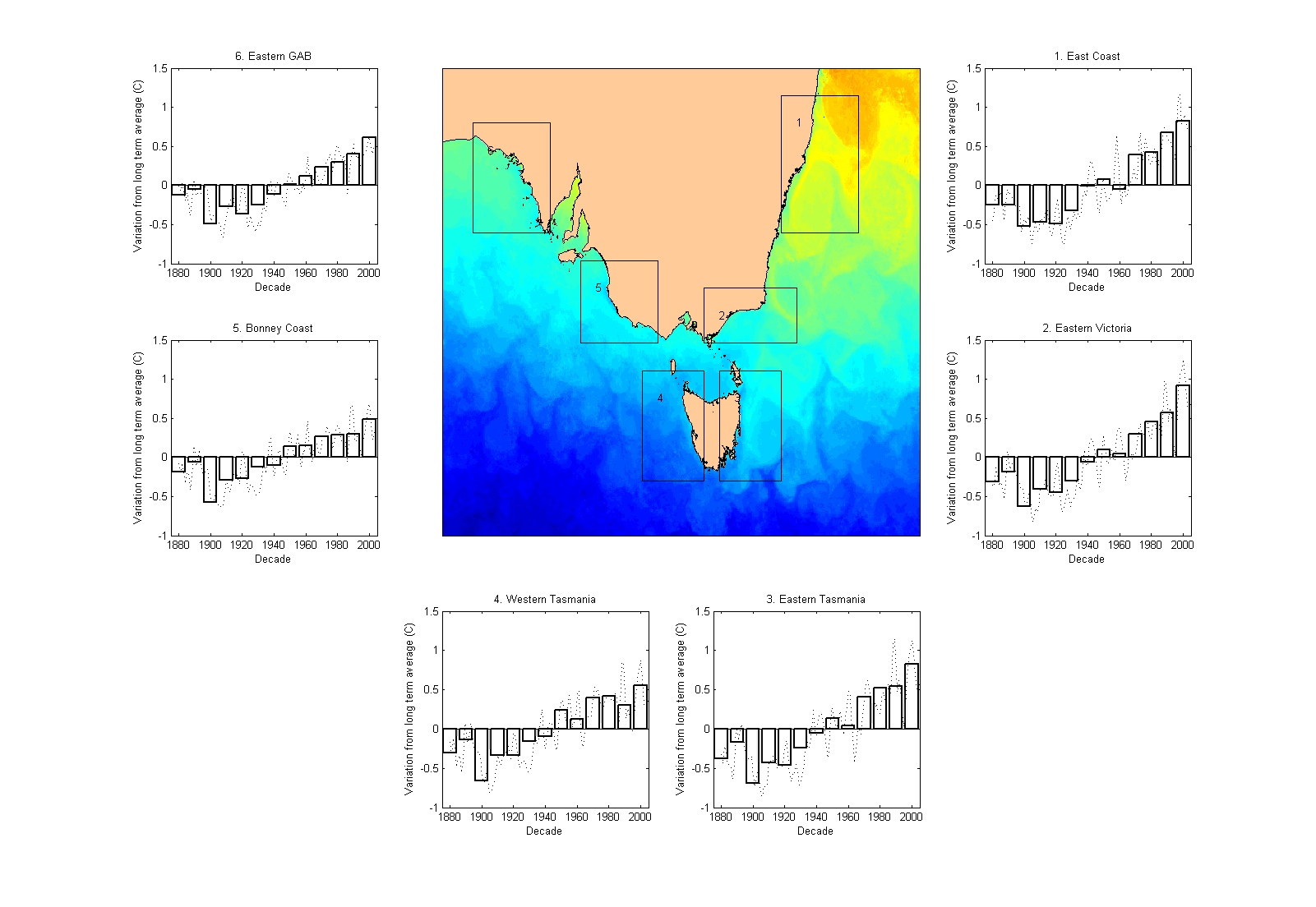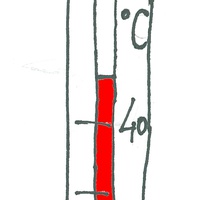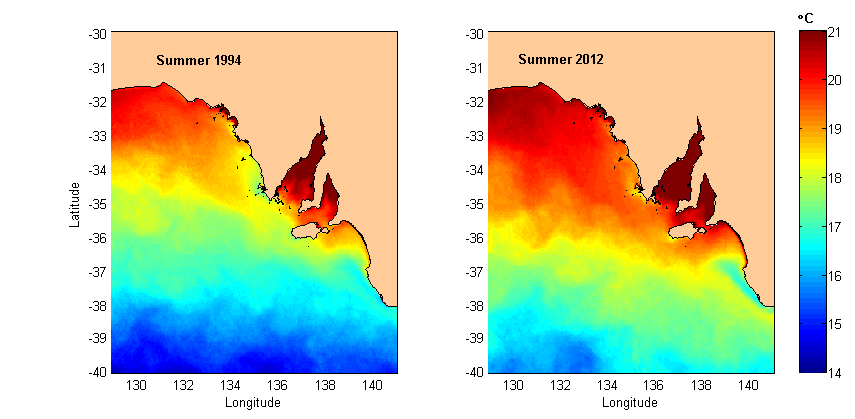Sea temperatures and climate change in South Australia
Dr Alistair Hobday and Jason Hartog (CSIRO).
Many coastal waters around Australia are warming up, according to the CSIRO Marine and Atmospheric Research. Yet South Australia has experienced a relatively weak ocean warming of less than 0.5°C.
The CSIRO has analysed temperatures off the coast of South Australia since the late 1800s: sea temperatures have risen some 0.5°C above the long-term average and mainly since the 1960s.
To understand why South Australia has seen ocean warming of half a degree - milder compared to other seas around Australia - we need to understand the influence of the local currents on water temperatures.
In the gulfs, water temperatures are related to atmospheric heating, so warm temperatures on land are associated with warmer waters in the gulfs. Seasonal warming in summer and cooling in winter is seen in both gulfs.
Offshore SA waters become warmer in the summer when eastward moving water from the Great Australia Bight is heated by the atmosphere. For example, warmer than usual sea temperatures were recorded in the warm summer of 2012 (as shown in the satellite image below). In winter, relatively warmer waters are recorded offshore due to the flow of the wintertime Leeuwin Current from west to east along the edge of the continental shelf.
But cool coastal upwelling also occurs during the summer in the south-east of the state, and along the western side of the Eyre Peninsula, and this often leads to cooler waters close to land. So, it’s the strong coastal upwelling that brings cool water to the surface and reduces the rate of ocean warming in South Australia. This cooler ocean upwelling is likely to further buffer the impacts of a changing climate into the future. But it’s also possible that an increase in air and land temperatures may further warm the seas off South Australia, like the relatively warm coastal waters seen in the summer of 2011/2012.
Above left image: average water temperatures in a relatively cool summer in South Australia (1994). Right: a relatively warm summer (2012) (CSIRO).
A small rise in water temperature over time doesn’t sound like much, but it has a significant impact on the distribution and physiology of marine species. Marine species have their own set of conditions they prefer to live in, like temperature and pH. Some biota will move (if they can) - also known as shifting their range - in search of these conditions if things get too hot at home. Others may adapt well to warming seas; while some will not survive in the changing conditions. For example, certain kelp species are moving south and even disappearing from the Adelaide coast. This will have a flow-on effect for all the animals that need the kelp for food and habitat.
(Story edited by: Yvette Barry)

Above: changes in Sea Surface Temperature (SST) since 1880 for southern and eastern Australia (CSIRO). Notice in the graphs, that water temperatures start rising above the long-term average after about the 1960s.
Acknowledgement: Data shown in these images represent the temperature of water at the surface and are collected by satellite, and processed at CSIRO by Chris Rathbone and colleagues. Further information is available at http://oceancurrent.imos.org.au/. Images and movies prepared by Alistair Hobday and Jason Hartog (CSIRO).
For more information see:
http://www.csiro.au/resources/CAF-working-papers.html
http://oceancurrent.imos.org.au/
Sketch of thermometer: Elsa Gartner, IMAS













